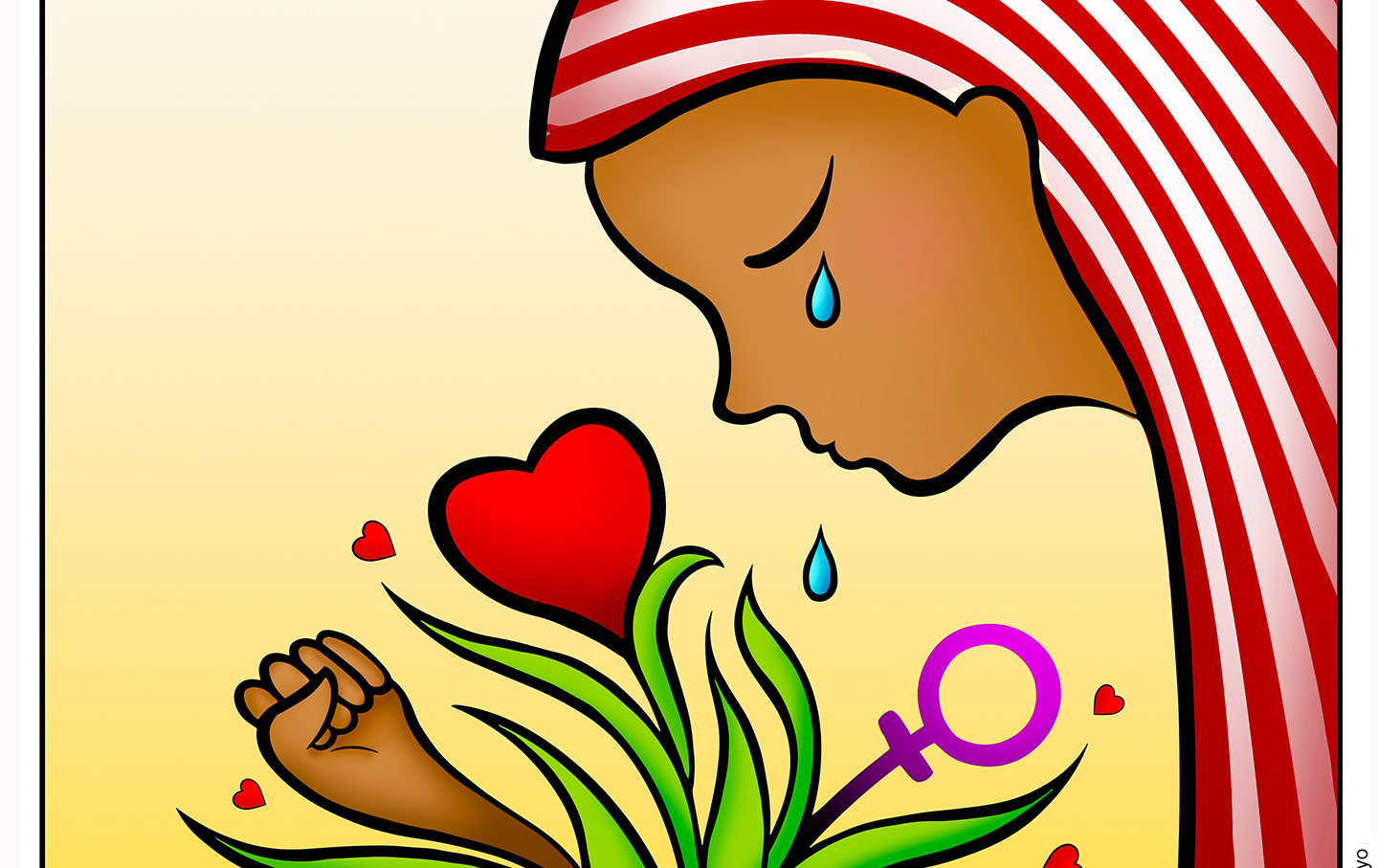The Students Protesting the War in Gaza Are Continuing a Proud Tradition
One thing is guaranteed: The commitment of this generation of student activists will reverberate through the progressive movement for years to come.
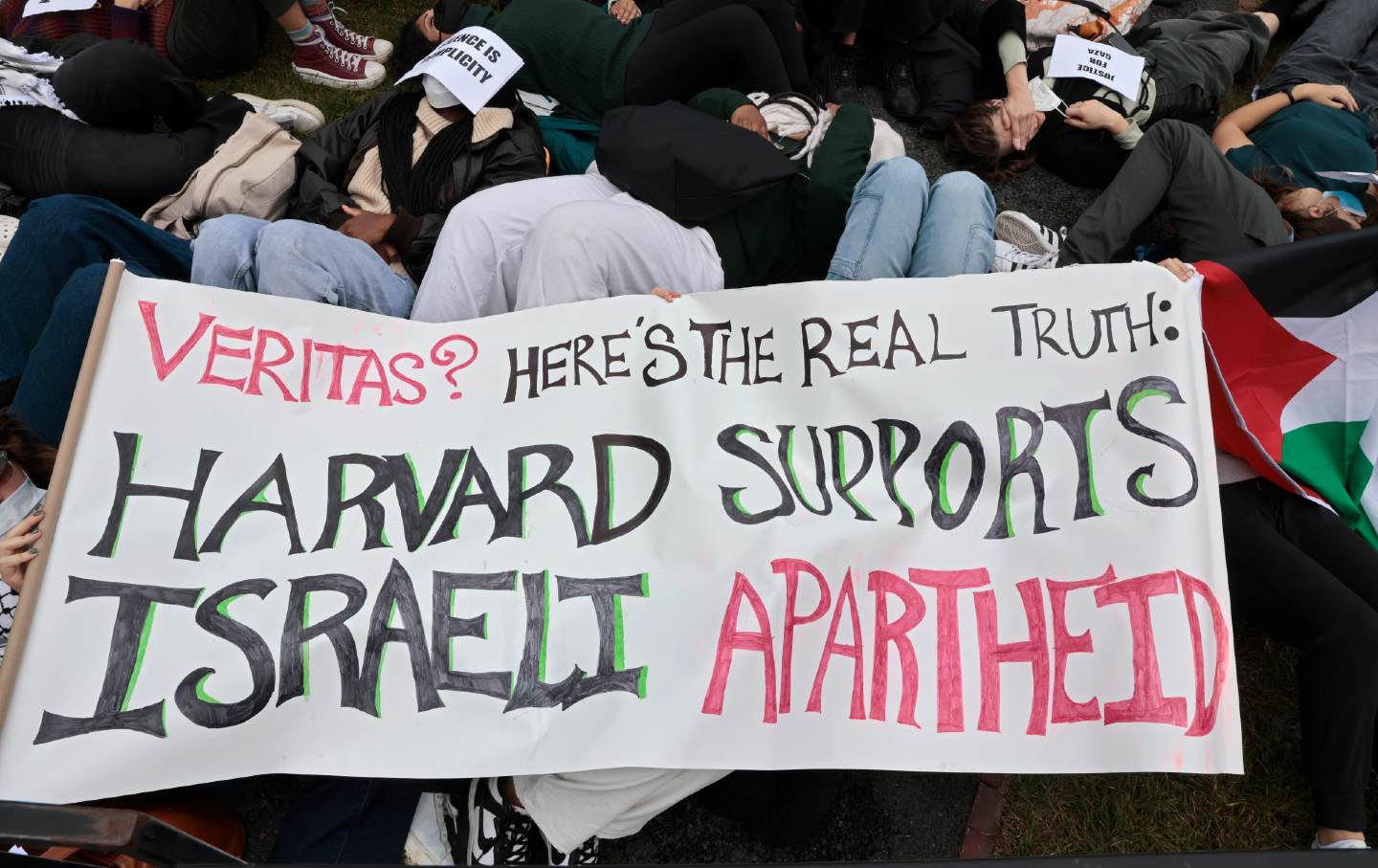
This article originally appeared at TomDispatch.com. To stay on top of important articles like these, sign up to receive the latest updates from TomDispatch.com.
I’ve spent most of my life as an advocate for a more peaceful world. In recent years, I’ve been focused on promoting diplomacy over war and exposing the role of giant weapons companies like Lockheed Martin and its allies in Congress and at the Pentagon as they push for a “military-first” foreign policy. I’ve worked at an alphabet soup of think tanks: the Council on Economic Priorities (CEP), the World Policy Institute (WPI), the New America Foundation, the Center for International Policy (CIP), and my current institutional home, the Quincy Institute for Responsible Statecraft (QI).
Most of what I’ve done in my career is firmly rooted in my college experience. I got a bachelor’s degree in philosophy at Columbia University, class of 1978, and my time there prepared me for my current work—just not in the way one might expect. I took some relevant courses like Seymour Melman’s class on America’s permanent war economy and Marcia Wright’s on the history of the colonization of South Africa. But my most important training came outside the classroom, as a student activist.
Student Activism: Columbia in the 1970s
As I look at the surge of student organizing aimed at stopping the slaughter of Palestinians in Gaza, I’m reminded that participation in such movements can have a long-term impact, personally as well as politically, one that reaches far beyond the struggle of the moment. In my case, the values and skills I learned in movements like the divestment campaign against apartheid South Africa of the 1970s and ’80s formed the foundation of virtually everything I’ve done since.
I was not an obvious candidate to become a student radical. I grew up in Lake View, New York, a rock-ribbed Republican suburb of Buffalo. My dad was a Goldwater Republican, so committed that we even had that Republican senator’s “merch” prominently displayed in our house. (The funniest of those artifacts: a can of “Gold Water,” a sickly sweet variation on ginger ale.)
Although I fit in well enough for a while, by the time I was a teenager my goal had become all too straightforward: get out of my hometown as soon as possible. My escape route: Columbia University, where I expected to join a vibrant, progressive student movement.
Unfortunately, when I got there in 1973, the activist surge of the anti–Vietnam War era had almost totally subsided. By my sophomore year, though, things started to pick up. The September 1973 coup that overthrew the democratically elected socialist government of Chile’s Salvador Allende and the ongoing repression of the Black population in apartheid South Africa had sparked a new round of student activism.
My first foray into politics in college was joining the Columbia University Committee for Human Rights in Chile. It started out as a strictly student organization, but our activities took on greater meaning and our commitment intensified when we befriended a group of Chilean exiles who had moved into our neighborhood on New York’s Upper West Side.
In 1974, I also took time off to work in the New York branch of the United Farm Workers‘ boycott of non-union grapes, lettuce, and Gallo wine. I ran a picket line in front of the Daitch Shopwell supermarket at 110th and Broadway in Manhattan. One of my regulars on that picket line was an older gentleman named Jim Peck. It took a while before I learned that he had been a central figure in the Freedom Rides in the South during the late 1940s and early 1950s. He had first been arrested for civil rights organizing in 1947 in Durham, North Carolina, alongside the legendary Bayard Rustin. He and his fellow activists, black and white, went on to ride buses together across the South to press the case for the integration of interstate transportation. On a number of occasions, they would be brutally beaten by white mobs. In my own brief career as a student activist, I faced no such risks, but Jim’s history of commitment and courage inspired me.
When I got back from my stint with the United Farm Workers, the main political activity on the Columbia campus was a campaign to get the university to divest from companies involved in apartheid South Africa. We didn’t win then, but we did help put that issue on the map. Ten years later, a student divestment movement finally succeeded, and Columbia became the first major university to commit to fully divesting from South Africa. That modest victory, part of sustained anti-apartheid efforts on college campuses and beyond, would be followed nationwide by Congress’s passage of comprehensive sanctions on the apartheid regime, despite a veto attempt by then-President Ronald Reagan.
Many of us kept working on the anti-apartheid issue after graduation. I remained a member of the New York Committee to Oppose Bank Loans to South Africa and, for a while, was also a member of the collective that put out Southern Africa magazine in support of the anti-apartheid struggle and liberation movements in southern Africa. In New York, our mentors and inspirations in the anti-apartheid movement were people like Prexy Nesbitt, a charismatic organizer from Chicago, and Jennifer Davis, a South African exile who edited our magazine and went on to run the American Committee on Africa. For that magazine, I helped track companies breaking the arms embargo on South Africa as well as multinational corporations propping up the regime, an experience that served me well when I went on to become a researcher in the world of think tanks.
From Student Activist to Think-Tank Expert
By that time, I was fully engaged politically. As I approached the end of my four years at Columbia, however, it slowly dawned on me that I was going to have to get a real job. The good news was that, in my brief career as a student activist, I had learned some basic skills, including how to craft an article, give a speech, and run a meeting.
The bad news was that I had absolutely no idea how to find gainful employment. So, I went home to Lake View for a while and my mom, who was a member of the International Typographical Union, gave me a crash course in proofreading and how to use official proofreading symbols. On the strength of those lessons, I got a job at a New York print shop, where I spent a miserable year proofreading magazines like Psychology Today, Modern Bride, Skiing, Boating, and pretty much any other publication ending in -ing.
Then I got lucky. A friend had just turned down a job, mostly because the pay was so lousy, at the Council on Economic Priorities, a think tank founded to promote corporate social responsibility. But my expenses at the time were, to say the least, minimal, so I took the job.
The focus of my first CEP project was economic conversion, a process designed to help communities reduce their dependency on Pentagon spending. It had been launched by Gordon Adams (now Abby Ross), then finishing The Iron Triangle, his immensely useful analysis of the military-industrial complex. While at CEP, I wrote about the top 100 Pentagon contractors, the top 25 arms exporting firms, and the economic benefits of a nuclear weapons freeze. My goal: produce research that would help activists and advocates make their case.
And so it went. Other than a stint in New York State government from the mid-1980s through the early 1990s, I’ve been a think-tank analyst ever since. At the moment, most of the issues I’ve advocated for, from reducing the Pentagon budget to cutting nuclear arsenals, are heading in exactly the wrong direction. By contrast, though, the issues I worked on as a student did indeed make progress, though only after years of organizing. South Africa’s apartheid regime actually fell in 1992. In 1975, California Governor Jerry Brown pushed through a state law guaranteeing the right of farmworkers to organize. In Chile, Pinochet was ousted thanks to a 1988 national referendum and lived his last years as an international pariah, even spending 503 days under house arrest in the United Kingdom on charges of “genocide and terrorism that include murder.”
The main difference between the successful solidarity movements I participated in and the other political movements in which I’ve played some small part was that both the South Africa divestment campaign and the United Farm Workers (UFW) boycott took their leads from people and organizations on the front lines of the struggle. Solidarity movements contributed in a significant fashion to those victories, but the central players were those front-line organizations, from the African National Congress and the Black Consciousness Movement in South Africa to UFW organizers working in the fields of California.
The Student Movement for Gaza
Which brings me back to the state of current student activism. I live 10 blocks from the main gates of Columbia University, the site of one of the more active student organizations pressing for a cease-fire in Gaza and an end to government and institutional support for Israel’s brutal military campaign there, which has already killed nearly 35,000 people and left many others without medical care, adequate food, or clean water. The International Court of Justice has already suggested that a plausible case can be made for the Netanyahu government being guilty of genocide. Whether you use that term or simply call Israeli actions “war crimes,” the killing has to stop, which makes me proud of those Columbia student activists and deeply ashamed of the way the leadership of my former university has responded to them.
This April, when the president of Columbia called in the riot police to arrest students engaged in a peaceful protest, she inadvertently brought a whole new level of attention to activism about Gaza. Students at scores of campuses across the country started similar tent cities in solidarity with the Columbia students and protests that had largely been ignored in the mainstream media are now drawing TV cameras from outlets large and small.
Popular
“swipe left below to view more authors”Swipe →Opponents of the student demonstrators, whose real goal is to get them to stop criticizing Israel’s mass slaughter of civilians in Gaza, have hurled claims of antisemitism at them that largely haven’t distinguished between actual acts of discrimination and cases of students feeling “uncomfortable” due to harsh—and wholly justified—criticisms of the Israeli government. As Judd Legum underscored at his substack Popular Information, there was no evidence of antisemitic acts by the students running the pro-cease-fire encampment at Columbia. Individuals and organizations outside the student movement seem to have been responsible for whatever hate rhetoric and related incidents have occurred.
Genuine antisemitism should be roundly condemned but confusing it with criticism of Israeli policies in Gaza will only make that job harder. And keep in mind that the Republican politicians hurling charges of antisemitism at students protesting repression in Gaza are, ironically enough, closely linked to actual antisemites.
To cite just one example, House Speaker Mike Johnson, who visited the Columbia campus last month in a purported effort to express his concern about antisemitism, has long promoted the racist “great replacement” theory, which holds that welcoming non-white immigrants is part of a plot to undermine the culture and power of white Americans. That theory has been cited by numerous perpetrators of racial and antisemitic violence, including the attacker who murdered 11 worshippers at the Tree of Life Synagogue in Pittsburgh in 2018.
Despite attempts to slander those student activists and divert attention from the devastation being visited on the people of Gaza, activists associated with groups like Jewish Voice for Peace and Students for Justice in Palestine continue to bravely build a vibrant movement that refuses to back down in the face of attacks by both college leaders and prominent donors. Such leaders have, in fact, interfered with student rights of assembly and free speech, suspended them for making statements critical of Israel, and used the police to break up protests. As the repression accelerates, with a surge of campus expulsions of protesters and the arrest of more than 2,500 students at more than 40 universities nationwide, the student activists continue to show courage under fire of a kind I was never called on to exhibit in my days in college. In the process, they have echoed the even larger protests of the anti-Vietnam War era.
If you were to look at a list of what the administrations at Columbia and other colleges and universities have done to student protesters in these weeks, without identifying the institutions doing it, you might reasonably assume that theirs was the work of autocratic regimes, not places purportedly dedicated to free inquiry and freedom of speech.
A number of universities—including Brown, Evergreen State, Middlebury, Rutgers, and Northwestern – have agreed to meet various student demands, from making formal statements in support of a cease-fire in Gaza to providing more transparency on university investments and agreeing to vote on divestment. Meanwhile, President Biden has pledged to impose a partial pause on arms transfers to Israel if it launches a major attack on the residents of the vulnerable enclave of Rafah. But far more needs to be done to end the killing and begin to provide reparations for the unspeakable suffering of the Palestinians in Gaza, including a cutoff of the supply and maintenance of all the American weaponry that has been used to support the Israeli military effort. Student organizing will continue, even in the face of ongoing efforts to smear the student rebels and divert attention from the mass killing of Palestinians. Those students remain remarkably (and bravely) determined to end this country’s shameful policy of enabling Israel’s devastating assault and they are clearly not about to give up.
Today’s Campaigns and Tomorrow’s
One thing is guaranteed: The commitment of this generation of student activists will reverberate through the progressive movement for years to come, setting high standards for steadfast activism in the face of the power of repression. Many of the activists from my own years on campus have remained in progressive politics as union organizers, immigration reform advocates, peace and racial justice activists, or even, like me, think-tank researchers. And don’t be surprised if the cease-fire movement has a similar impact on our future, possibly on an even larger scale.
Face it, we’re living through difficult times when fundamental tenets of our admittedly flawed democracy are under attack, and openly racist, misogynist, anti-gay, and anti-trans rhetoric and actions are regarded as acceptable conduct by all too many in our country. But the surge of student activism over Gaza is just one of many signs that a different, better world is still possible.
To get there, however, it’s important to understand that, even as we rally against the crises of the moment, suffering both victories and setbacks along the way, we need to prepare ourselves to stay in the struggle for the long haul. Hopefully, the current wave of student activism over the nightmare in Gaza will prove to be a catalyst in creating a larger, stronger movement that can overcome the most daunting challenges we face both as a country and a world.
We cannot back down
We now confront a second Trump presidency.
There’s not a moment to lose. We must harness our fears, our grief, and yes, our anger, to resist the dangerous policies Donald Trump will unleash on our country. We rededicate ourselves to our role as journalists and writers of principle and conscience.
Today, we also steel ourselves for the fight ahead. It will demand a fearless spirit, an informed mind, wise analysis, and humane resistance. We face the enactment of Project 2025, a far-right supreme court, political authoritarianism, increasing inequality and record homelessness, a looming climate crisis, and conflicts abroad. The Nation will expose and propose, nurture investigative reporting, and stand together as a community to keep hope and possibility alive. The Nation’s work will continue—as it has in good and not-so-good times—to develop alternative ideas and visions, to deepen our mission of truth-telling and deep reporting, and to further solidarity in a nation divided.
Armed with a remarkable 160 years of bold, independent journalism, our mandate today remains the same as when abolitionists first founded The Nation—to uphold the principles of democracy and freedom, serve as a beacon through the darkest days of resistance, and to envision and struggle for a brighter future.
The day is dark, the forces arrayed are tenacious, but as the late Nation editorial board member Toni Morrison wrote “No! This is precisely the time when artists go to work. There is no time for despair, no place for self-pity, no need for silence, no room for fear. We speak, we write, we do language. That is how civilizations heal.”
I urge you to stand with The Nation and donate today.
Onwards,
Katrina vanden Heuvel
Editorial Director and Publisher, The Nation
More from The Nation
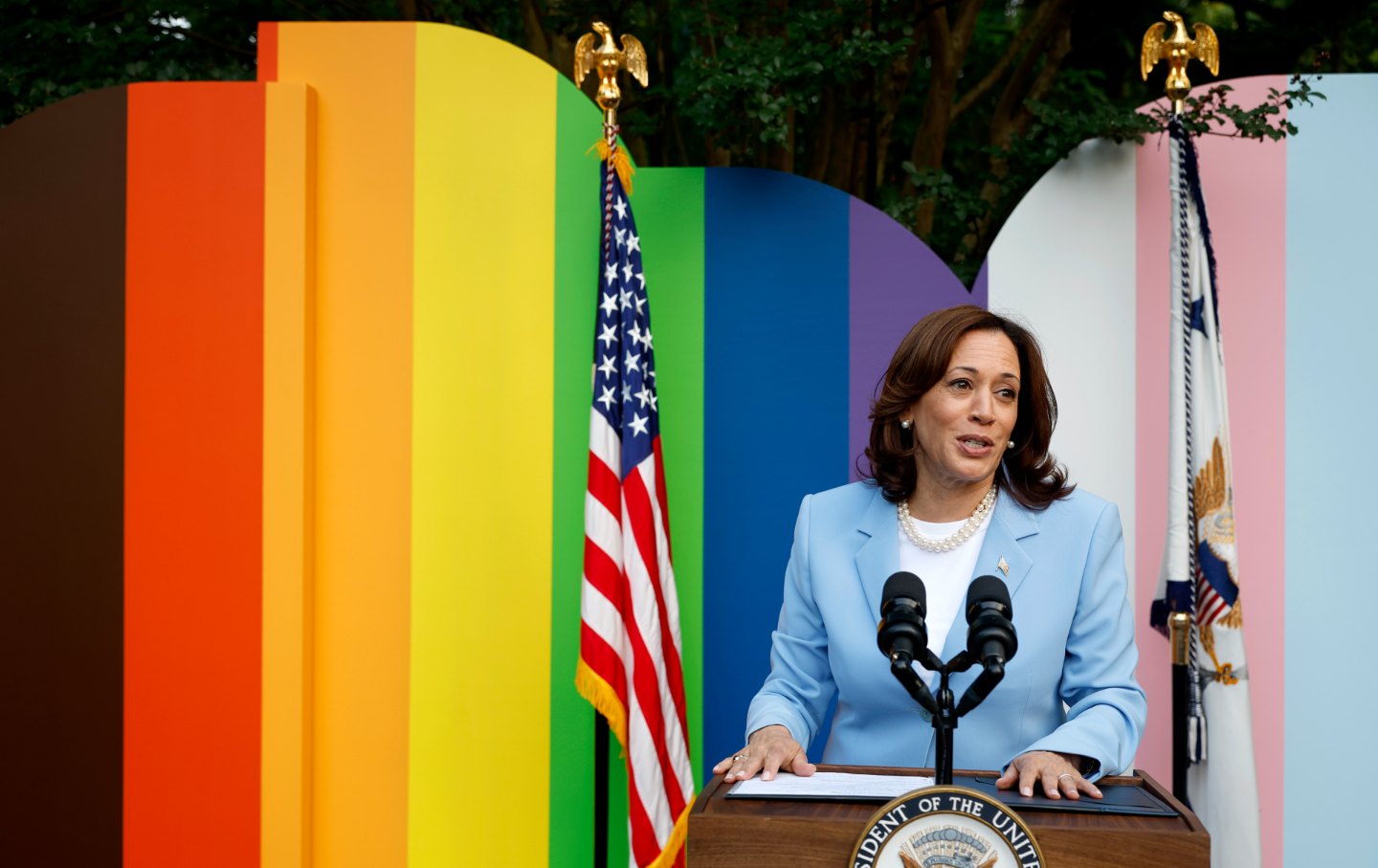
Trans People Shouldn’t Be Scapegoated for Democrats’ Failures Trans People Shouldn’t Be Scapegoated for Democrats’ Failures
Politicians and pundits are stoking a backlash to trans rights in the wake of the election. They’re playing a dangerous game.
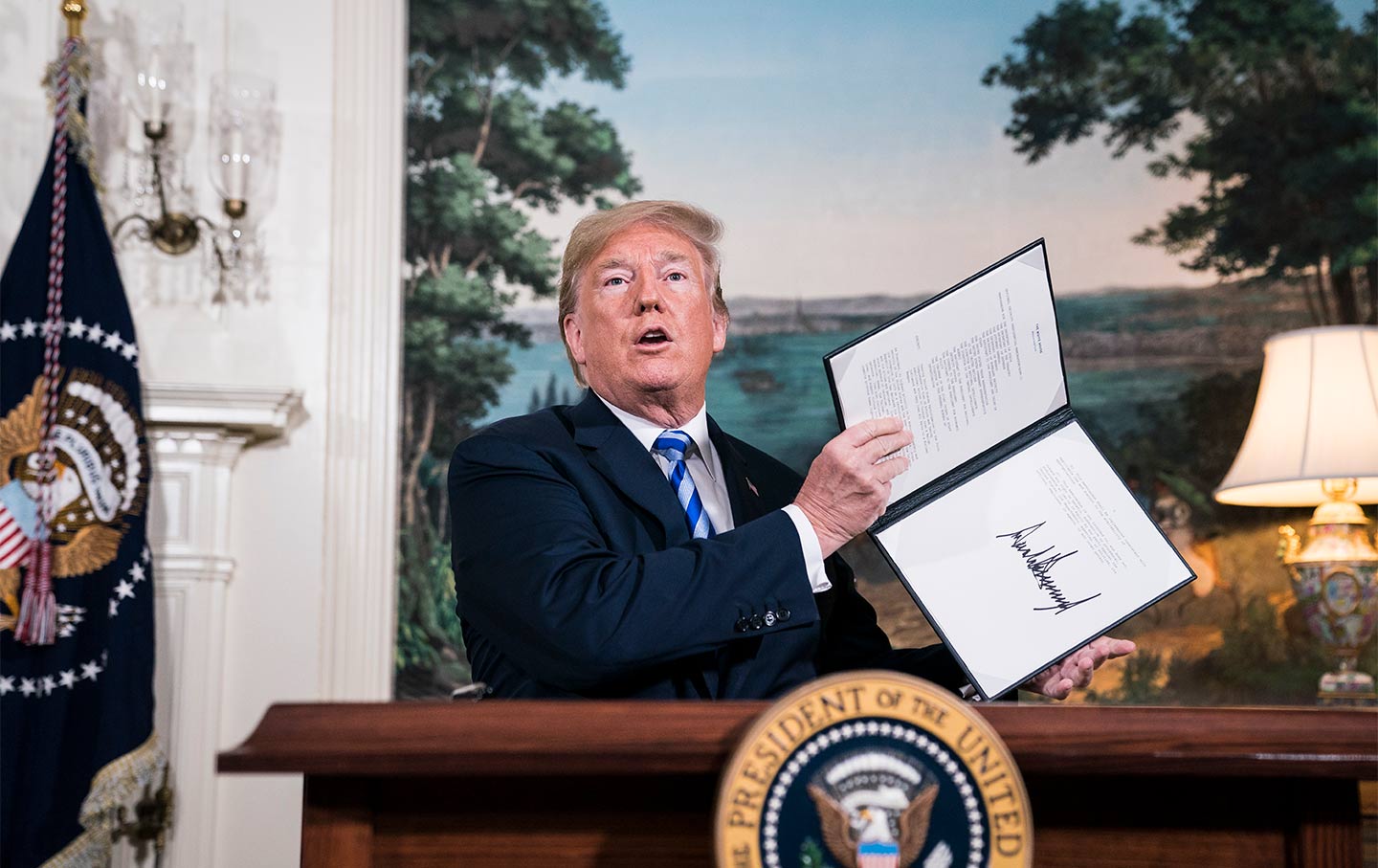
What Will a Peace Movement Look Like Under Trump’s Second Presidency? What Will a Peace Movement Look Like Under Trump’s Second Presidency?
An all-hands-on-deck approach to the coming world of Donald Trump and crew is distinctly in order.
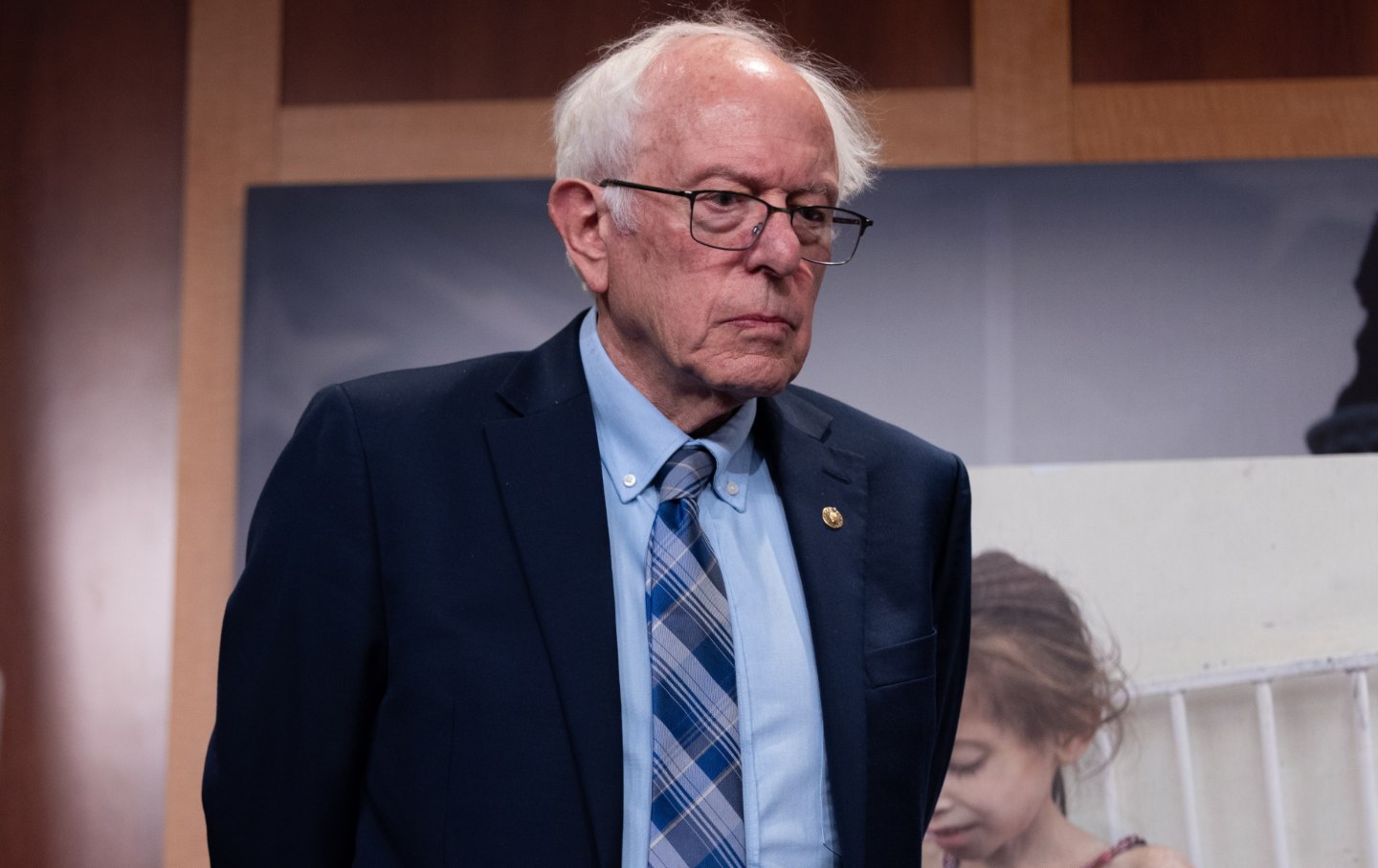
Bernie Sanders Is Leading a Bold New Effort to Block Arms Sales to Israel Bernie Sanders Is Leading a Bold New Effort to Block Arms Sales to Israel
The senator has more allies than ever in his fight to hold Israel accountable and save lives in Gaza.
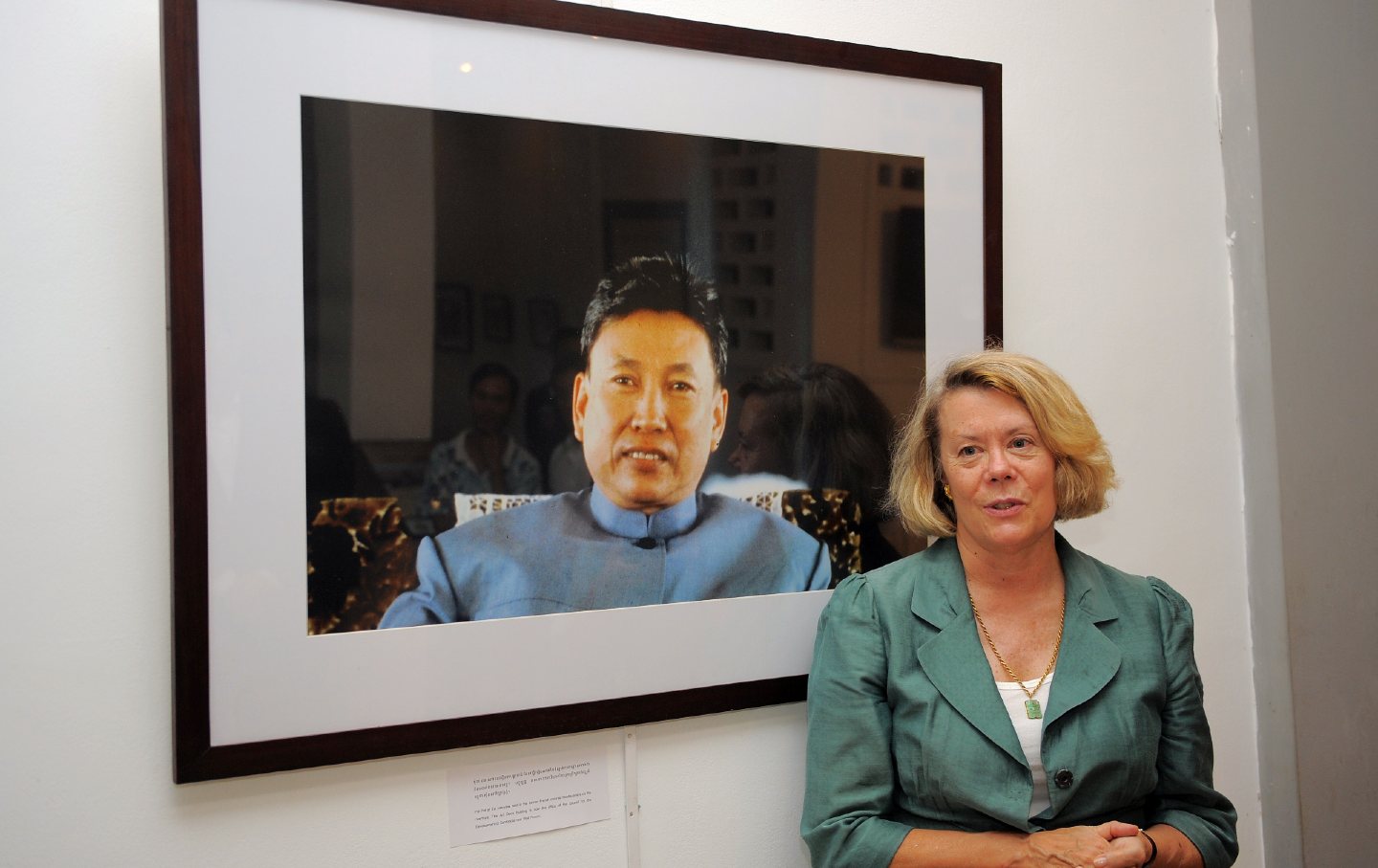
Warning From the Past Warning From the Past
In a new film, journalists confront a dictator.
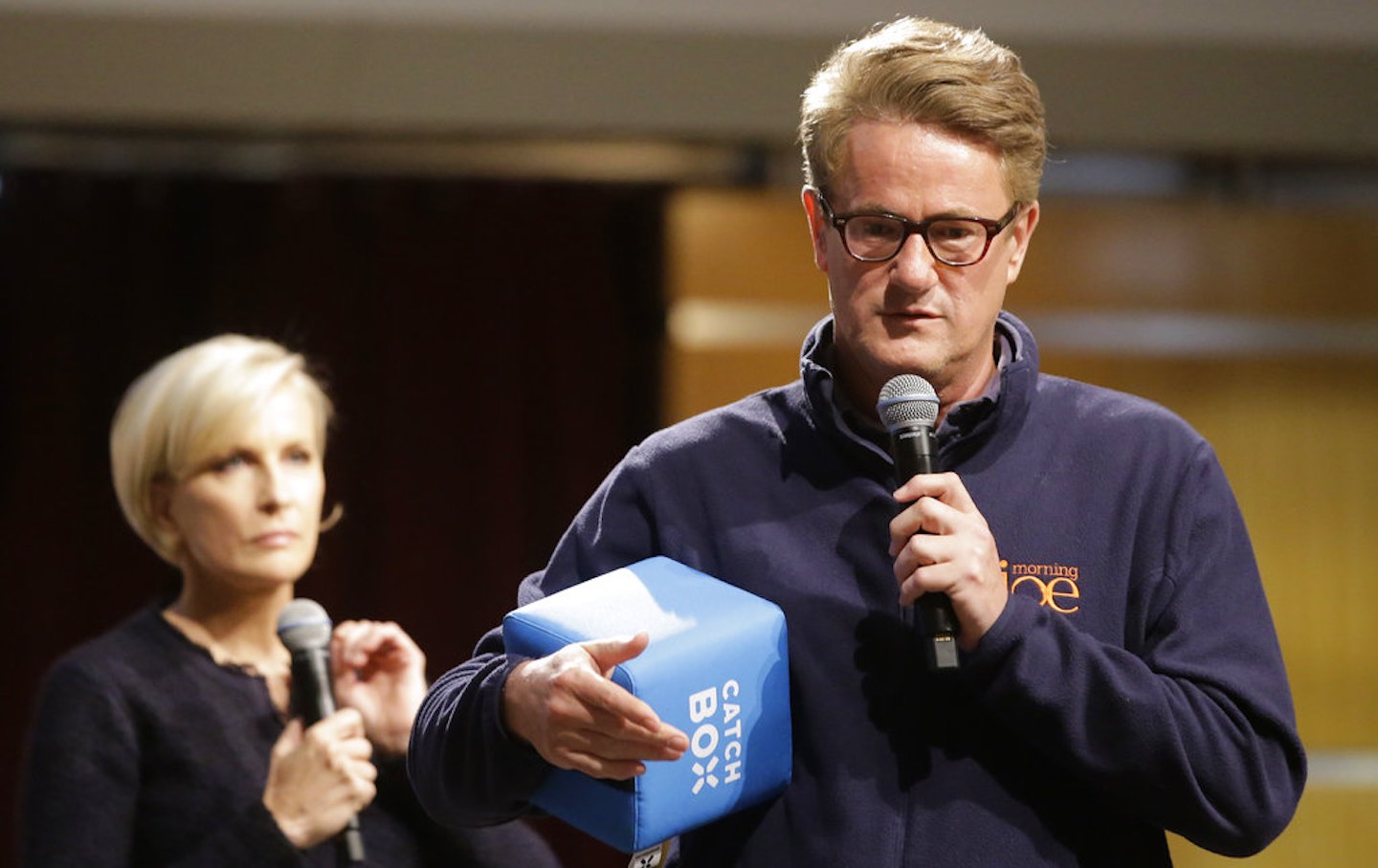
Mr. Scarborough Goes to Mar-a-Lago Mr. Scarborough Goes to Mar-a-Lago
The hosts of Joe Biden’s favorite political talk show have quickly pivoted to kissing the ring of the incoming president.

